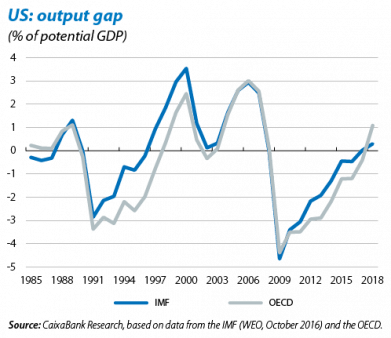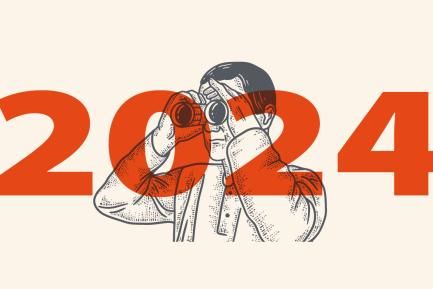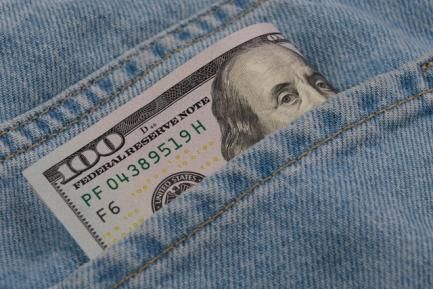The US: in a mature phase of the business cycle and with an expansionary fiscal policy
A trillion dollars to improve infrastructures in the US and an extensive tax breaks, two of the promises made by President Trump to his voters. But does the US need a fiscal stimulus if its unemployment rate is below 5.0% and growth has remained above 2% since 2010? Although this fiscal impulse will boost US growth, if the economy is at full employment it may be less effective and, moreover, could result in inflationary pressures and postpone the adjustment of its public debt.
It is not easy to determine an economy’s business cyclical position but the conclusion provided by the main indicators seems clear for the case of the US. Starting with some basic indicators, core inflation has been above 2% for several months now and wages have posted increases of around 2.5% year-on-year. Both these figures are typical of moments when the US economy has been in a mature phase of its business cycle.
A slightly more sophisticated way to assess an economy’s point in the cycle is by using the output gap.1 According to the most recent estimates by the IMF, the US economy is about to close its output gap after years of this being negative. Although the margin of error for such estimates is high, other organisations such as the OECD have also suggested the US will close its gap in 2017 (see the first graph).
On the other hand, there is also a set of macrofinancial indicators that tend to be good predictors of an economy’s cyclical position in the medium term. Along these lines, the OECD produces a variable that brings together several of these indicators for a group of countries, including the US.2 Using this variable, we can construct a «clock» which, like a conventional one, «tells the time» in the cycle an economy will reach after about three quarters. What we can see from the US clock is that, in 2015, the economy already seemed to be close to finishing the recession-expansion cycle started at the end of 2007 (see the second graph). In 2016, and with the data available so far, which do not include the final tranche of the year, this clock seems to have gone backwards, a consequence of the upswing in financial volatility at a global level occurring at the end of 2015 and beginning of 2016 and the sharp drop in oil prices, substantially affecting the country’s energy industry. In this respect, the clear improvement observed in leading business indicators in the last few months, as well as the recovery in the price of crude oil, are factors that should return the clock to a similar position as in 2015, coinciding with a mature phase of the business cycle.
1. The output gap is defined as the difference between actual GDP and the GDP compatible with stable inflation close to 2%. For more information on this concept see the Dossier in MR05/2013 («Potential GDP, a crucial but unclear concept»).
2. This is the Composite Leading Indicator (CLI), a time series which, in the case of the US, is constructed based on seven indicators, including housing starts, the business sentiment index (ISM) and the NYSE trend.





